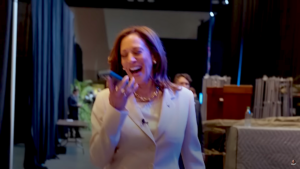
Young audiences are interested in topics such as geopolitics and international conflicts and professionals must make the subject accessible
*por Neel Dhanesh
The International Symposium on Online Journalism is, by definition, a celebration of the art of journalism. But this year there has also been a global examination of the role of the journalist writ large: As the social media industry moves along the precarious cliff of collapsing business models and eroding trust in journalism, panelists asked, repeatedly, whether the role of the journalist is – or should be – changing.
Some have suggested that journalists shed the veneer of neutrality to engage more with readers wherever they are, taking on the role of community stewards. Others suggested that we stop just reporting the news and start focusing more on information that affects readers’ daily lives.
A panel on what social media influencers and journalists can learn from each other offered another potential path to transformation. “I don’t think people care if I’m a journalist or a content creator”these Maria Paulina BaenaColombian journalist and political scientist who co-founded the The Pullaa political satire YouTube channel owned by the newspaper El Espectador. “Deep down, I feel like a journalist, but the fact is that I also create a lot of content and I learned from both scenarios.”
One of the biggest differences between traditional journalism and social media-first work (often YouTube), panelists said, is the degree to which creators have to dedicate themselves to their work. When Sam Elliscreator and showrunner of the channel Search Party from YouTube, worked at Vox, didn’t need to appear on camera – people trusted the Vox brand and therefore didn’t need Ellis to establish his personal credentials. “But when you’re independent, people really need a connection with you.”he said.
So, Ellis began to put himself in what he called “edges” of videos, appearing on screen during the credits to make announcements and help viewers establish a personal connection with him.
That personal touch can be a double-edged sword: Baena said she faced more sexism and misogynistic attacks after starting her work at La Pulla, and recently left to pursue other projects. “But I have no problem blocking people.”she continued. “At some point, I think people will get bored if you don’t respond.”
Creating journalism for social media also means being subject to the algorithms that govern each platform and their constant search for new content. When Ellis worked at Vox, he would spend 4 to 6 weeks on a video; As an independent creator, your production time is essentially cut in half. This means he has to think more carefully about his stories, finding a way to maintain the rigorous journalistic standards he has set for himself while at the same time keeping up with the publishing pace necessary to maintain success. When the war in Gaza broke out, for example, he chose to focus on how the conflict placed Arab leaders in a difficult situationrather than making a comprehensive video about the underlying story.
Hugo Travers, founder of HugoDecryptea news channel that prioritizes social media and dominates the French 18-34 year old market, with 200 million monthly views on TikTok and 35 million on YouTube, has a “love and hate” with the algorithm. “When I was 18 and started the channel, I didn’t have money to advertise”says Travers. “The only way for my work to be discovered was the algorithm. And the algorithm helped a lot.”
HugoDécrypte’s combined social media channels now have more followers, 14 million, than The world, the leading French newspaper, and Travers manages a team of around 25 people. They interviewed some of France’s biggest names, including French President Emmanuel Macron. But even so, they had difficulty obtaining press cards from the agency that provides official credentials to journalists, because HugoDécrypte did not have its own website when its team first requested press cards.
So Travers and his colleagues created a website that contained transcripts of each video, submitted it to the agency, and received their cards. They are now able to cover breaking news and participate in protests like other accredited French journalists can, and some of their work can often be similar to the news bulletins and roundtables one would expect to find on a cable news channel. But their videos are tailor-made for social media, mainly YouTube, Instagram and TikTok.
Throughout building his channel to where it is now, Travers said one thing became clear to him: the idea that young people aren’t interested in news. “serious” is false.
“The question is not about the topics, but how you approach them”, he stated. Younger audiences are interested in topics like geopolitics and international conflicts — just look at the protests over the Gaza conflict roiling universities — but Travers said both creators and journalists have to make these topics accessible to their audiences. .
“Journalists have always been content creators, they are only subject to this common set of rules and procedures”, Ellis said. Going independent, he said, brings its own set of challenges — a changing algorithm, a faster pace, more individual scrutiny from the public — but that, he continued, “it’s just a parameter for you to be more creative about the stories you cover”.
*Neel Dhanesha is a writer at Nieman Lab.
Translated by Bruna Rossi. Read the original in English.
O Poder360 has a partnership with two divisions of Harvard’s Nieman Foundation: the Nieman Journalism Lab and the Nieman Reports. The agreement consists of translating into Portuguese the texts that Nieman Journalism Lab and Nieman Reports publish and publishing this material on Poder360. To access all translations already published, click here.
Source: https://www.poder360.com.br/nieman/o-que-jornalistas-independentes-podem-aprender-entre-si/

